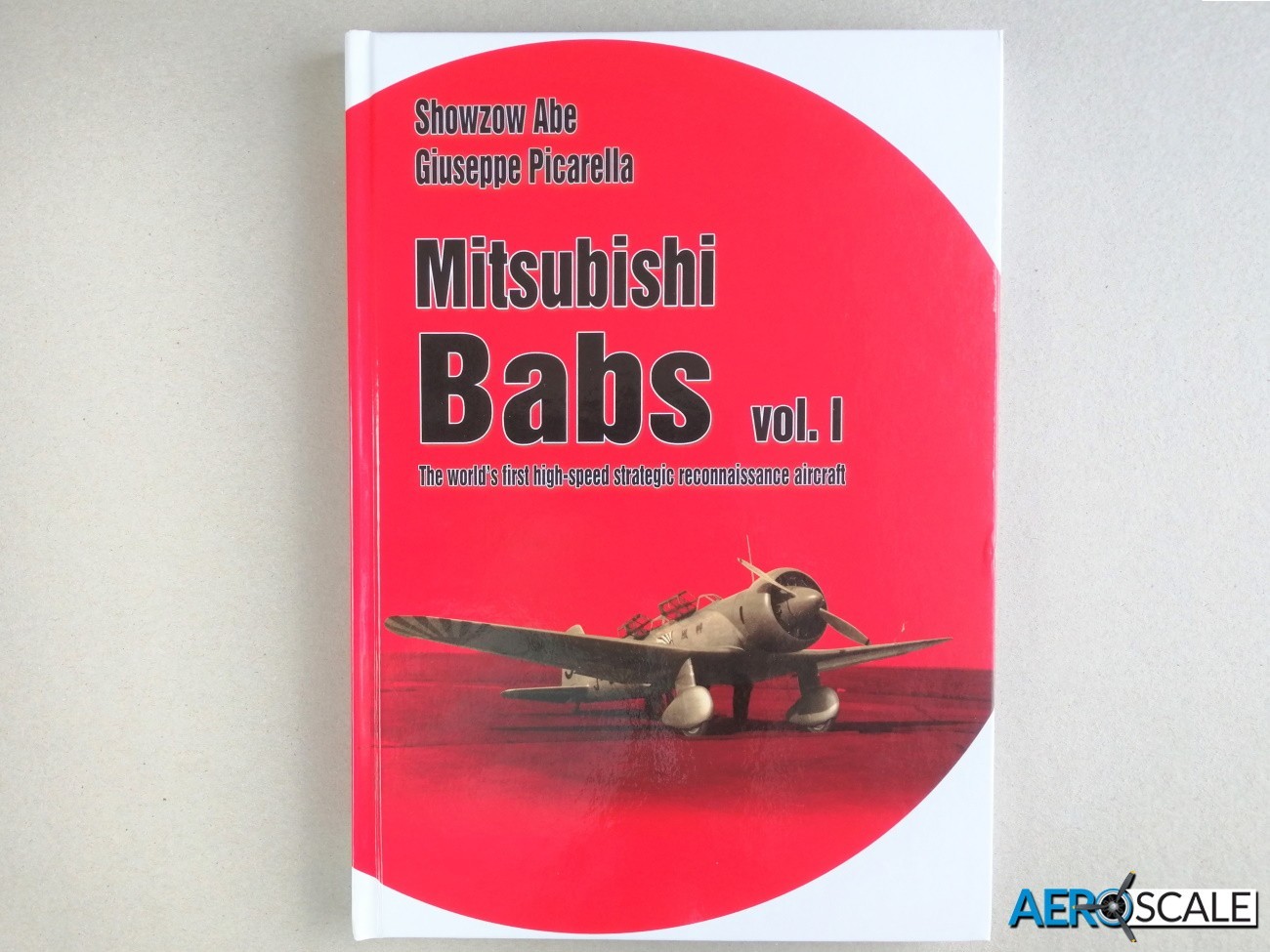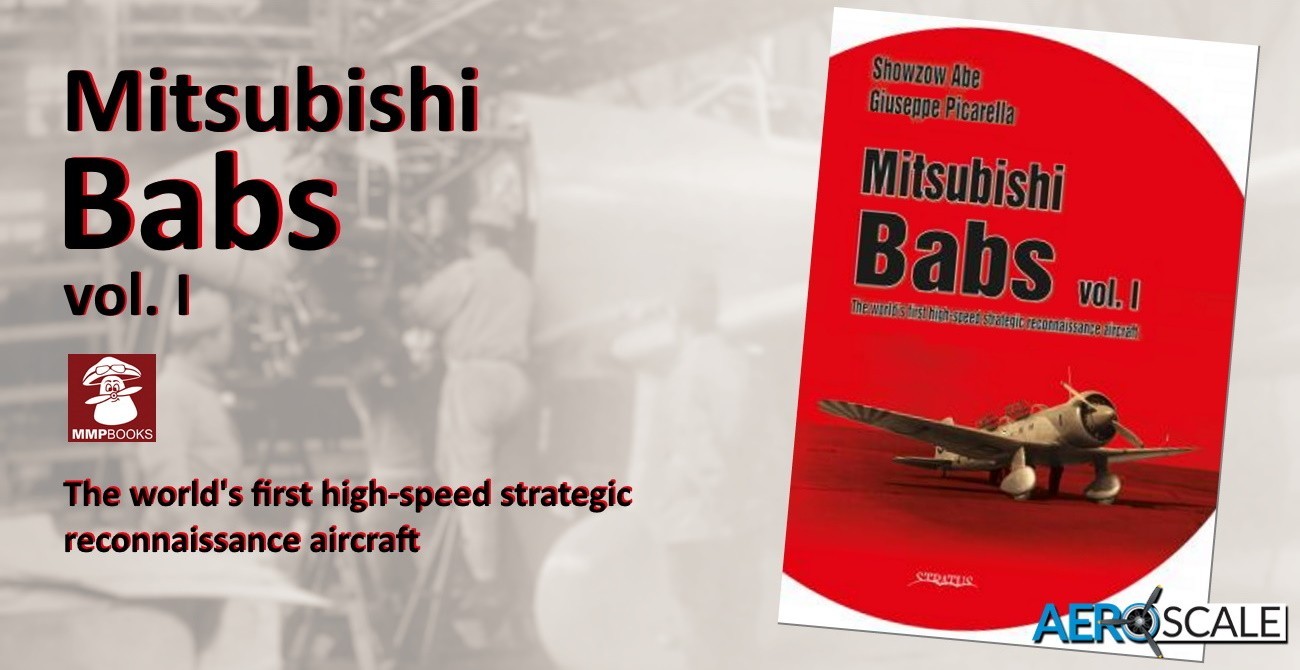
From the mid 1930’s until the early 1940’s Japan enjoyed a ‘golden age’ in aeronautics. The military side of the aircraft industry flourished in Japan with support from both the Navy and Army. One of the products of this ‘golden age’ was the Mitsubishi Ki-15 Babs Army Type 97, the first high speed strategic reconnaissance aircraft in the world.

Inside the hard back cover, you will find:
Introduction and Acknowledgements.
Notes.
Chapter 1: Japanese land-based reconnaissance aircraft 1911-1935
Chapter 2: Made in Japan
Chapter 3: Strategic reconnaissance – uncharted territory
Chapter 4: kamikaze flight
Chapter 5: Changing the rules of the game
The authors notes explain the rather complex nomenclature associated with Japanese military and civilian aircraft. An important inclusion as the book discusses many Japanese types that were considered for strategic reconnaissance.
Chapter 1 looks at the many land-based reconnaissance aircraft that were developed, some influenced by western designs. The types include:
- PMBRA Kaishiki No.4
- PMBRA Seishiki-3, Tokorozawa Koshiki-1 experimental reconnaissance aircraft
- Tokorozawa & Kawasaki Type-Otsu 1 reconnaissance aircraft
- Tokorozawa Koshiki A-3 long range reconnaissance aircraft
- Nakajima/Breuguet 19-A-2
- Ishikawajima T-2 experimental reconnaissance aircraft
- Mitsubishi Tobi-Type reconnaissance aircraft - 2MR1
- Nakajima Experimental N-35 reconnaissance aircraft
- Kawasaki Army Type-88 reconnaissance aircraft – KDA-2
- Ishikawajima experimental reconnaissance aircraft T-3
- Mitsubishi experimental short range reconnaissance aircraft - 2MR7
- Kawasaki experimental KDA-6 reconnaissance aircraft/ A-6 communications aircraft
- Mitsubishi Army Type-92 reconnaissance aircraft – 2MR8
- Nakajima/Fokker Navy reconnaissance aircraft – C2N1
- Kawasaki C-5 communications aircraft
- Mitsubishi Navy Experimental 8 – Shi special reconnaissance aircraft – Ka-9 [G1M1]
- Nakajima Army Type-94 reconnaissance aircraft – Ki-4
Chapter 2 looks at the formation of the Naval Aeronautical Establishment [NAE] and its importance in setting up new aircraft projects. Not surprisingly due to the expected performance of the ‘Babs’, its DNA can be traced back to the early single wing fighter. The authors look at in detail at the factors that would influence the final design of the ‘Babs’
Chapter 3 looks at other nations use of aircraft in the role of reconnaissance, still very much governed by strategies from WWI. Almost all were converted civil or light bombers, with the exception of the He 119. It was not until Captain Yuuzou Fujiita formulated the concept of Strategic reconnaissance in 1936 that careful thought should be given to it use. Once the concept had been accepted by the NAE, and with chief designer at Mitsubishi Fumihiko Kouno on the project, the Ki15 ushered in a new chapter in aviation history. It was some three years later that Flt, Lt. [RAF] Maurice ‘Shorty’ Longbottom submitted a similar proposal some three years later to the British Air Ministry to develop a small strategic reconnaissance aircraft utilising the Spitfire. Flt, Lt. Longbottom was considered the father of strategic reconnaissance. The development of the Ki-15 is covered with three pages of 1:72 scale plans. Drawings include both the low and high canopy installations as well as variations of engine cowl. You will note that the initial design was so good for the time that there was little variation in the airframe for the prototype up to the Ki-15 III.
The fascinating story is told of goodwill flight from Tokyo to Croydon and the return back to Tokyo sponsored by the Japanese newspaper publisher: Asahi Shimbun occupies much of chapter 4. The publisher was able to loan the second prototype of the Mitsubishi Ki-15 Babs named ‘Kamikaze’. The tour of European countries before the return leg is also looked at. There are many images of ‘Kamikaze’ the ones taken at Croydon Airfield are particularly interesting. The chapter has four view 1:72 scale colour plans of ‘Kamikaze’ as well as other named Ki-84-I/II aircraft. Also, there are 1:48 scale side profiles.
Despite its performance and fame within Japan, the Army still hadn’t quiet grasped the significance of the ‘Babs’ it wasn’t until it was deployed in conflict zones that it proved its worth. Chapter 5 looks at the operational deployment and use of the Ki-15 in China, Manchuria, Korea, French Indochina and the pacific. It was not only used for photographic reconnaissance, it was also utilised as a command-and-control platform, particularly useful for assessing artillery strikes in real time. The development and production of the Ki-15 II and Ki-15 III is studied. It’s a testament to the original design of that the airframe did not change much in its development. Just the shape of the engine cowling accommodating successive power units. The various camouflage, combat and unit markings are described and illustrated with many quarter scale side profiles of the aircraft and numerous drawings focusing on tail markings. Of course, there are many photographic supporting the research of the squadrons and markings utilising the type. Also, there is plenty of photographic evidence of the clean lines and build quality of the aircraft. Interestingly the proposal by Flt, Lt. [RAF] Maurice ‘Shorty’ Longbottom to the Air Ministry arguing for the need for strategic reconnaissance is reproduced in chapter 5, under the aptly titled section ‘Reinventing the wheel’. Finally, the demise of the ‘Babs’ is touched on. Although it provided a valuable asset pre-WWII it quickly became obsolete facing more advanced allied aircraft.
The book is interspersed with ‘Babs’ biographies about the people involved with the design and building of the KI-15 as well as information about the various squadrons and units that operated it.
One thing that is different from many books out there is this one has a stitched spine. There are around 117 good quality black and white photographs included. The book has around 60 colour illustration, many of which are in 1:72 or 1:48 scales. The scale drawings are particularly useful as it’s possible to reproduce many of the tail markings for any modelling project. One thing that separates this book from many out there is that this one has a stitched spine. Very unusual and good to see and means the book opens and stays flat beautifully.
- Authors: Giuseppe Picarella, Showzow Abe
- Illustrator: Giuseppe Picarella
- ISBN 9788366549739
- Format: A4 Hardback, 192 pages (192 in colour)
- 117 B&W photos
- 60 colour illustration, majority in 1:48 or 1:72 scales
- Price: 40.00 GBP
Conclusions
I have to confess; I knew nothing about the Mitsubishi Ki-15 Babs before reading this book. This is an incredible piece of research by the two authors Giuseppe Picarella and Showzow Abe. The narrative and detail remind me of the classic aviation books of Bill Gunston and Arthur Reed. It not only provides a detailed background, development and service history of the Mitsubishi Ki-15 Babs, it also contains a useful explanation to the somewhat confusing Japanese army and navy aircraft designations. It is an extremely fascinating read backed up with numerous photos and lots of scale plans and profiles. Definitely worthy of any modeller and aviation historian’s library. In short this is a stunning resource and highly recommended.
Thanks to MMP for this review sample.
Please remember, when contacting retailers or manufacturers, to mention that you saw their products highlighted here – on AEROSCALE.

